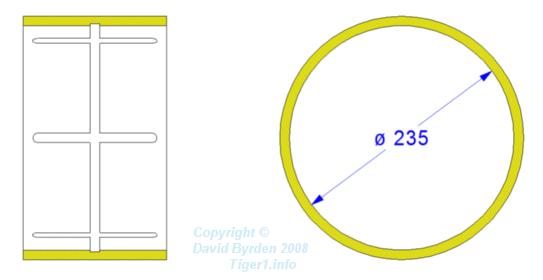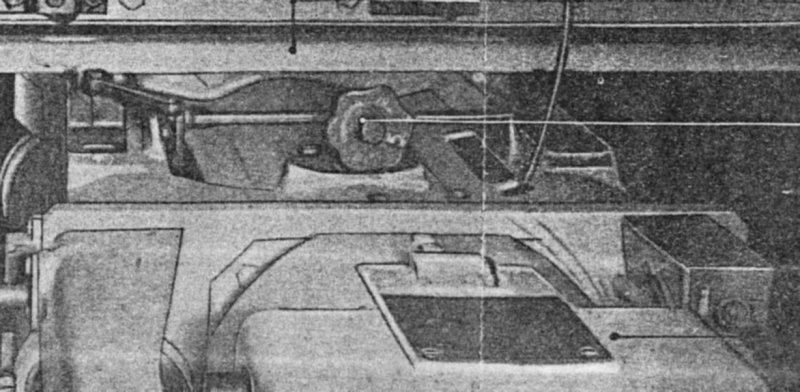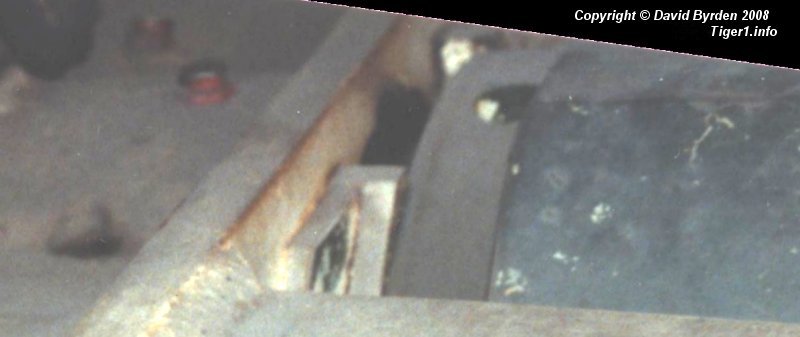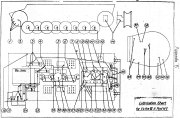
To allow it to recoil, the Tiger's KwK36 gun was carried in two large bushings. I have not seen them nor any images of them, but knowing that the KwK36 was a scaled-up version of the KwK24, I will extrapolate from that gun's design.

The bushings in the KwK24 were made of brass and had 4 internal grooves to distribute lubricating oil. The position of the oil taps on the KwK36 suggests that it had 6 grooves, as shown here. The internal diameter is known because it is the diameter of the gun barrel.
These filling taps are numbered (43) on the Tiger Lubrication Chart. They should be filled "before each prolonged action".

This German photograph shows the cradle as seen from the commander's seat. The breech of the gun is closest to us. Immediately ahead of it is the rear plate of the gun cradle. There is a handwheel on top of the cradle, part of the gun tube seal. At the base of the handwheel, the two oil taps can be seen.

Here, we are inside the Early Tiger at Bovington museum, before restoration. This is the top of the cradle (the breech was painted green by the British). You can see that the breech rests against one of the four pads. Although painted 'ivory' like the rest of the gun, these pads were made of leather strips tightly sewn together, with a metal base.
[1] Survey of vehicle 251114, at Saumur, by Jean-Charles Breucque
[2] Der Panzerkampfwagen VI und seine abarten, Walter J. Spielberger, Motor Buch Verlag
[3] Survey of Tiger 251114 at Saumur, by Hilary Louis Doyle
[4] Survey of Tiger 250122, at Bovington museum, by David Byrden
[6] Survey of Tiger 251114, at Panzermuseum Munster, by Rob Veenendaal
